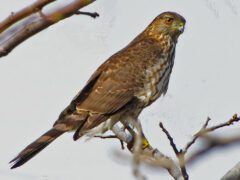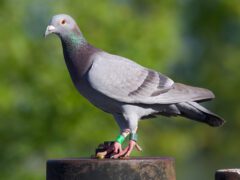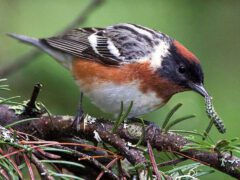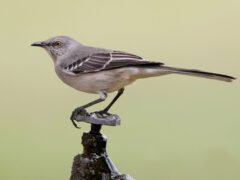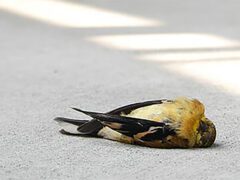Identification
Powered by Merlin
Gangly wader with a long bicolored bill. Breeding plumage is dark brick-red below (male) or pale orangey (female); nonbreeding plumage is overall gray-brown with white belly; compare to Black-tailed Godwit. In flight shows rather plain upperwings with only a faint whitish wing stripe; white rump and finely barred tail. Mainly coastal away from tundra breeding grounds. Often in flocks feeding on mudflats and in brackish coastal lagoons, roosting in adjacent freshwater habitats. Feeds by probing its long bill into the mud.
Relative Size
Slightly larger than a Hudsonian Godwit and smaller than a Marbled Godwit.


Measurements
- Both Sexes
- Length: 14.6-15.3 in (37-39 cm)
- Weight: 7.0-25.4 oz (200-720 g)
Regional Differences
Ornithologists recognize two Bar-tailed Godwit subspecies groups: “European” and “Siberian.” The “European” group breeds from northern Scandinavia to north-central Siberia and spends the nonbreeding season from western India to West Africa. The “Siberian” group breeds from north-central Siberia to western and northern Alaska and occurs from eastern China and Southeast Asia to Australia and New Zealand. “European” birds have mostly white underwings, rump, and lower back, while “Siberian” birds have heavy brown barring in those areas.









































